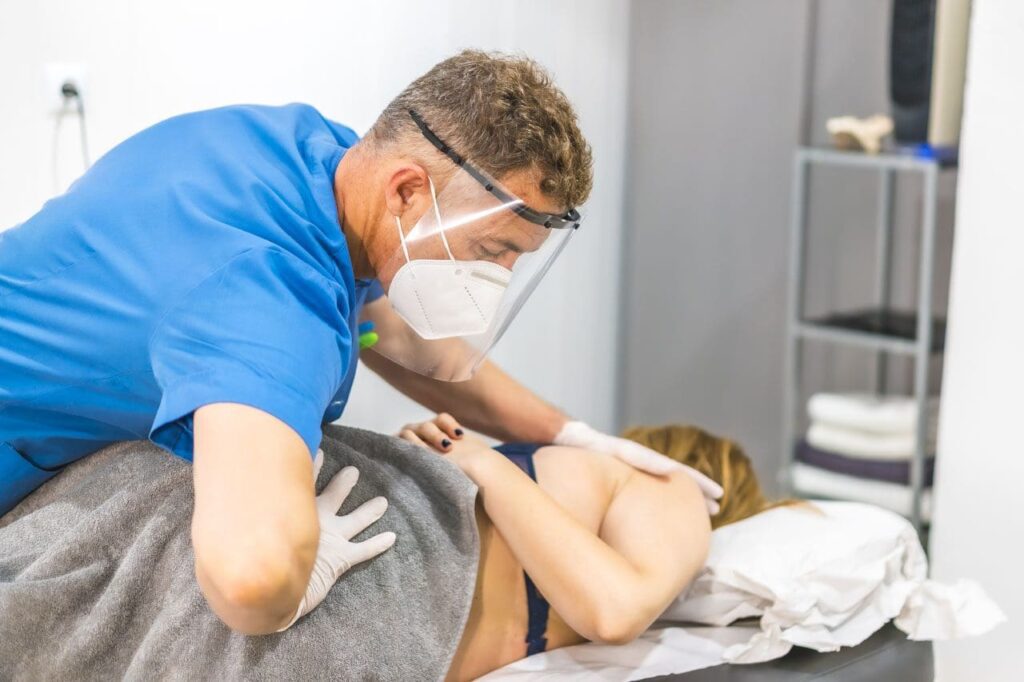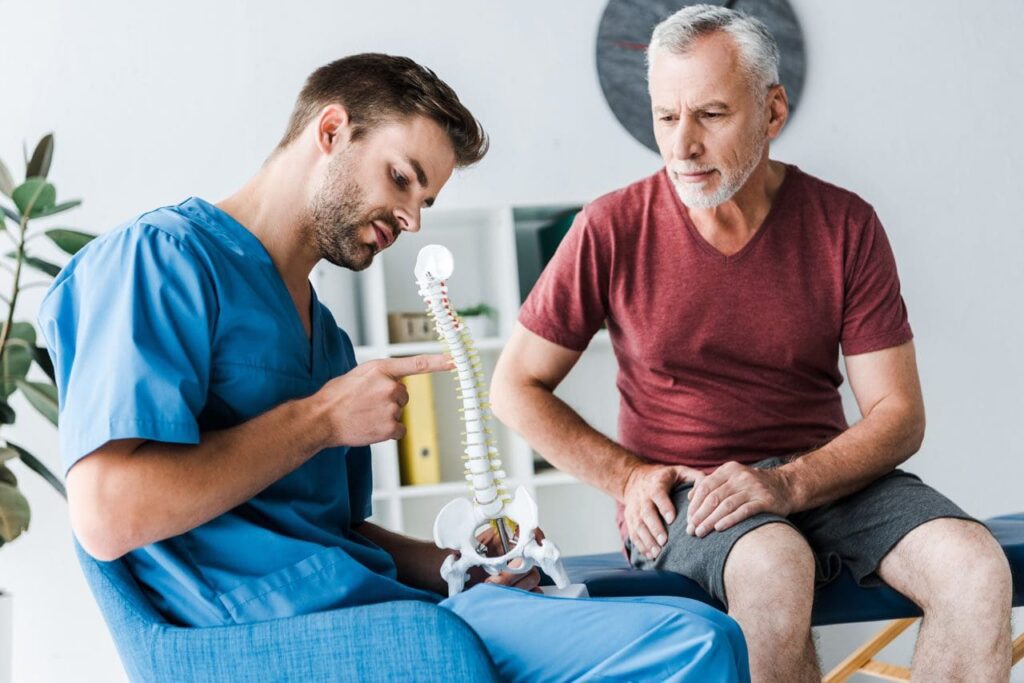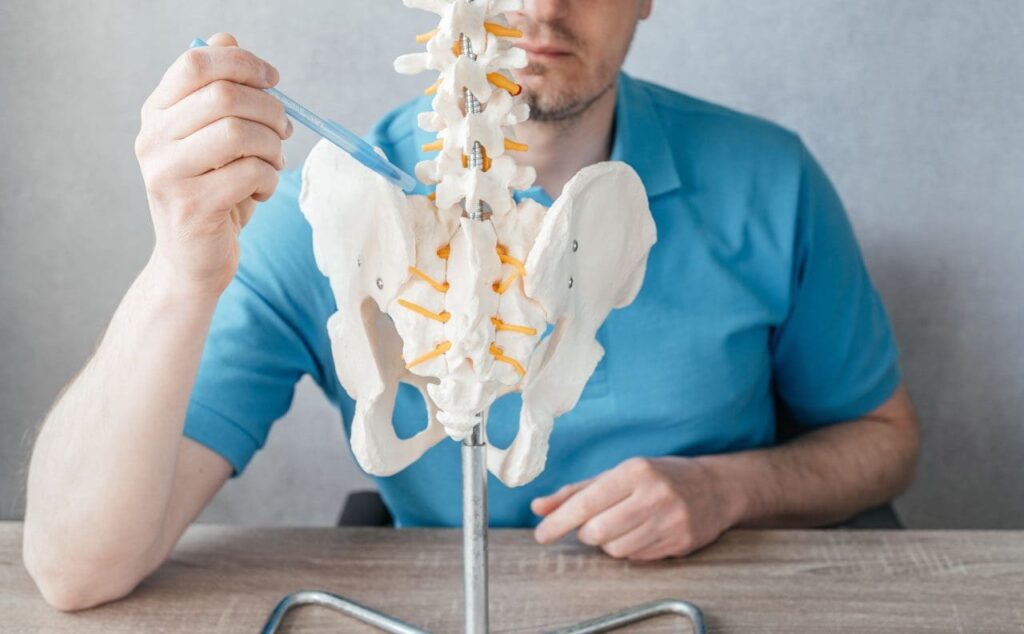Post-Accident Headaches: Fast, Lasting Relief

Post-Accident Headaches & Chiropractic Care: A Practical, Patient-First Guide for ChiroMed
Headaches that won’t quit after a car crash are common—and fixable. This guide explains why they linger and how an integrative chiropractic plan at ChiroMed can address the root causes with safe, conservative care.
Why Headaches Linger After Car Accidents
A collision can injure soft tissues (muscles, tendons, and ligaments), upset normal spinal alignment, and irritate nerves in the neck and upper back. Together, these changes create muscle guarding, restricted joint motion, and inflamed pain pathways that keep headaches going—even when ER scans look “normal.” Typical patterns include tension-type headaches, cervicogenic (neck-originating) headaches, post-traumatic migraines, and post-concussive headaches (Cascade Spine & Injury Center, 2023; North Port Chiropractic, 2025; Wellness Chiropractic Care, n.d.). Cascade Spine and Injury Center+2northport-chiropractor.com+2
- Soft-tissue microtrauma triggers inflammation and protective spasm. Tight suboccipitals, SCMs, scalenes, and upper trapezius muscles can refer pain into the head and behind the eyes (Brookdale Health, n.d.). brookdalehealth.com
- Spinal misalignments and facet joint irritation alter mechanics in the upper cervical spine and can refer pain toward the skull (North Port Chiropractic, 2025; Dr. Toth Chiropractic, n.d.). northport-chiropractor.com+1
- Nerve irritation and autonomic upset heighten sensitivity to normal movement and posture, reinforcing headache cycles (Premier Care Chiropractic, 2023/2024). premiercarechiro.com+1
- Delayed onset is common: symptoms may flare days to weeks after impact as inflammation evolves and compensations set in (Premier Care Chiropractic, 2024; Premier Care Chiropractic, 2023). premiercarechiro.com+1
Important: Seek emergency care first for red flags like severe or worsening headache, repeated vomiting, confusion, weakness/numbness, vision or speech changes, or loss of consciousness (Cascade Spine & Injury Center, 2023; Neuro Injury Care, 2023). Chiropractic care complements—never replaces—urgent medical evaluation. Cascade Spine and Injury Center+1
The Headache Patterns We See Most
Tension-Type Headaches
Why they happen: After a crash, overloaded neck and shoulder muscles develop trigger points that refer pain to the head.
What it feels like: Dull, band-like pressure starting at the neck/base of the skull; worse with stress or screen time.
What helps: Gentle cervical/upper-thoracic adjustments, soft-tissue release, and breathing-based down-regulation (Brookdale Health, n.d.; Wellness Chiropractic Care, n.d.). brookdalehealth.com+1
Cervicogenic Headaches
Why they happen: Pain is generated by cervical joints/soft tissue but felt in the head; often linked to upper-cervical facet irritation and reduced segmental motion.
What it feels like: Unilateral head/neck pain that worsens with neck movement or sustained posture.
What helps: Segment-specific adjustments/mobilization and deep-neck-flexor reconditioning (North Port Chiropractic, 2025; Premier Care Chiropractic, 2023). northport-chiropractor.com+1
Post-Traumatic Migraines
Why they happen: Impact can dysregulate cervical nociception, the trigeminovascular system, and autonomic tone.
What it feels like: Throbbing pain with light/sound sensitivity, nausea; activity or posture may aggravate.
What helps: Improve cervical mechanics and tissue tone, normalize sleep/hydration, pace activity; consider decompression when indicated (My Pinnacle Chiropractic, 2025; Premier Care Chiropractic, 2023). Pinnacle Chiropractic+1
Post-Concussive Headaches
Why they happen: Rapid acceleration/deceleration can injure brain tissues and cervical structures even without a direct head strike.
What it feels like: Headache with dizziness, brain fog, or visual strain; may worsen with exertion.
What helps: Medical clearance first; then a graded plan to restore cervical mobility and strength, guided by symptoms (Cascade Spine & Injury Center, 2023). Cascade Spine and Injury Center
The Mechanics Behind Lingering Pain
- Inflammation + Guarding Loop
Damaged tissues release inflammatory mediators that stimulate pain receptors. The body “guards” by tightening muscles, which compresses joints and perpetuates inflammation (Lutz Chiropractic, 2025; Wellness Chiropractic Care, 2023). lutzchiro.com+1 - Joint Fixations & Misalignments
When cervical segments stop moving well, facet joints and surrounding tissues become irritated, leading to increased referred head pain (North Port Chiropractic, 2025; Dr. Toth Chiropractic, n.d.). northport-chiropractor.com+1 - Nerve Sensitization
Irritated nerve roots and sympathetic fibers elevate sensitivity. Restoring alignment and easing tissue load helps normalize signaling (Premier Care Chiropractic, 2023/2024). premiercarechiro.com+1 - Delayed Expression of Symptoms
Early adrenaline and subtle sprains can mask pain; symptoms may arise days or weeks later as swelling and compensations evolve (Premier Care Chiropractic, 2024; Premier Care Chiropractic, 2023). premiercarechiro.com+1
How Chiropractic Care at ChiroMed Addresses Root Causes
At ChiroMed, your plan is built to treat what’s driving the headache, not just dull symptoms. We combine hands-on care, targeted exercise, and practical self-care so improvement lasts.
1) Spinal Adjustments (Manual or Instrument-Assisted)
Gentle, specific adjustments restore segmental motion, reduce facet irritation, and refine alignment—especially at the upper cervical spine. Patients often report fewer and less intense headaches as mechanics normalize (Dr. Toth Chiropractic, n.d.; North Port Chiropractic, 2025). drtoth.com+1
2) Soft-Tissue Therapy
Myofascial release and trigger-point techniques deactivate common referral sources (suboccipitals, SCM, scalenes, upper traps), reduce guarding, and help adjustments “hold” between visits (Brookdale Health, n.d.). brookdalehealth.com
3) Cervical Traction/Decompression (As Indicated)
For patients with nerve irritation or axial loading, gentle traction can open space, reduce pressure, and improve local circulation—often easing cervicogenic and tension-type triggers (North Port Chiropractic, n.d.). northport-chiropractor.com
4) Corrective Exercise & Postural Retraining
We re-educate deep neck flexors, scapular stabilizers, and thoracic mobility to support healthy mechanics during driving, desk work, and daily life (Premier Care Chiropractic, 2023; Lutz Chiropractic, 2025). premiercarechiro.com+1
5) Education & Prevention
Micro-breaks, workstation tweaks, sleep/hydration routines, and graded activity protect progress and lower flare-ups (Cascade Spine & Injury Center, 2023; Wellness Chiropractic Care, n.d.). Cascade Spine and Injury Center+1
Timing matters. Evaluating within the first 1–2 weeks helps prevent chronic pathways from “setting in” (Premier Care Chiropractic, 2024; Dr. Toth Chiropractic, 2025). premiercarechiro.com+1
What a Visit Looks Like (ChiroMed Process)
- History & Red-Flag Screen
We clarify the mechanism (rear-end, side-impact, headrest position), immediate/delayed symptoms, medications, prior headache history, and job/sport demands. Red flags trigger immediate medical referral (Cascade Spine & Injury Center, 2023; Neuro Injury Care, 2023). Cascade Spine and Injury Center+1 - Neuromusculoskeletal Exam
- Cervical/thoracic ROM and joint end-feel
- Palpation for segmental tenderness & trigger points
- Neurologic screen: myotomes, dermatomes, reflexes
- Headache triggers: posture, screen/drive time, sleep
- Advanced Imaging (As Indicated)
X-ray or MRI/CT is considered for neurological deficits, high-energy trauma, or poor progress after an appropriate trial of care (North Port Chiropractic, 2025; Premier Care Chiropractic, 2023). northport-chiropractor.com+1 - Diagnosis & Care Plan
We identify dominant drivers—such as joint dysfunction, muscle guarding, nerve irritation, migraine physiology, or mixed—and match them with precise interventions (Dr. Toth Chiropractic, n.d.; Brookdale Health, n.d.). drtoth.com+1 - Outcome Tracking & Case Coordination
We document progress (range, strength, disability scores, frequency/intensity of headaches) and coordinate with your PCP, specialists, or, when relevant, legal teams. (Premier Care Chiropractic, 2023; El Paso Chiropractic/Synergy, 2025—exemplar). premiercarechiro.com+1
Complementary Therapies That Pair Well With Chiropractic
- Massage therapy / myofascial release: Frees restricted tissue and improves circulation (Brookdale Health, n.d.). brookdalehealth.com
- Heat & cold strategies: Apply heat before mobility to relax tissues; use brief ice after workload spikes (Cascade Spine & Injury Center, 2023). Cascade Spine and Injury Center
- Ergonomics & driving posture: Headrest height, seat angle, and screen position reduce cervical load (Cascade Spine & Injury Center, 2023). Cascade Spine and Injury Center
- Graded return to activity: Short walks and gentle mobility boost blood flow without flare-ups (Premier Care Chiropractic, 2023). premiercarechiro.com
Recovery Timeline (Example)
Note: Your plan will be individualized. This timeline illustrates common milestones.
Weeks 0–2: Calm & Restore Motion
- Tolerance-based cervical/upper-thoracic adjustments
- Soft-tissue release for suboccipitals, SCMs, scalenes, upper traps
- Gentle traction/decompression as indicated
- Heat before movement; brief ice after activity
- Micro-breaks every 20–30 minutes; sleep/hydration reset
(Dr. Toth Chiropractic, 2025; Brookdale Health, n.d.). drtoth.com+1
Weeks 2–6: Re-Educate & Strengthen
- Deep-neck-flexor endurance and scapular stabilization
- Thoracic mobility drills; desk/driver posture coaching
- Reassessment: ROM, headache frequency/intensity, disability scores
(Premier Care Chiropractic, 2023; Lutz Chiropractic, 2025). premiercarechiro.com+1
Weeks 6–12: Stabilize & Prevent
- Maintain adjustment frequency as needed
- Progress strength/endurance; add job- or sport-specific tasks
- Build a prevention toolkit: mobility sequence, ergonomic playbook, flare-control plan
(Premier Care Chiropractic, 2023). premiercarechiro.com
Frequently Asked Questions
Do “minor” crashes really cause lasting headaches?
Yes. Even low-speed impacts can strain soft tissue and disturb joint mechanics. Symptoms often appear days or weeks later (Premier Care Chiropractic, 2024; Premier Care Chiropractic, 2023). premiercarechiro.com+1
How soon should I see a chiropractor?
Ideally, within 1–2 weeks, or sooner if symptoms escalate (Premier Care Chiropractic, 2024; Dr. Toth Chiropractic, 2025). premiercarechiro.com+1
Will I need imaging?
Not always. Imaging is considered for neurological findings, severe trauma, or poor progress (North Port Chiropractic, 2025; Premier Care Chiropractic, 2023). northport-chiropractor.com+1
Can chiropractic help post-traumatic migraines?
By improving alignment, reducing muscle tension, and normalizing nerve input, many people report fewer and less intense migraine days (My Pinnacle Chiropractic, 2025; Premier Care Chiropractic, 2023). Pinnacle Chiropractic+1
What if symptoms persist beyond 3 months?
That’s often considered chronic and may still respond to a targeted plan; we reassess drivers and adjust care (Premier Care Chiropractic, 2024). premiercarechiro.com
A Brief Clinical Lens on Dual-Scope Care (Exemplar)
While ChiroMed provides chiropractic-centered, integrative care, it’s useful to note how some clinics coordinate chiropractic and medical decision-making under one roof. For example, Dr. Alexander Jimenez, DC, APRN, FNP-BC (El Paso) illustrates a dual-scope model that correlates biomechanical findings with medical drivers, orders advanced neuromusculoskeletal imaging when indicated, and prepares legal-ready documentation for personal-injury cases—all while progressing patients through adjustments, soft-tissue care, decompression, and rehabilitation (Jimenez, 2025a–d; El Paso Chiropractic/Synergy, 2025). This kind of coordination underscores the value of clear diagnosis, structured progression, and consistent documentation in post-accident headache care. Synergy Chiropractic
Practical Home Strategies (Simple & Repeatable)
- Screens at eye level: Keep ears over shoulders; set a 20–30-minute micro-break timer (Cascade Spine & Injury Center, 2023). Cascade Spine and Injury Center
- Warm before, cool after: Brief heat before mobility to relax tissue; brief ice after workload spikes (Brookdale Health, n.d.). brookdalehealth.com
- Hydrate and sleep: Dehydration and poor sleep can amplify headaches, so maintain a steady routine (Premier Care Chiropractic, 2023). premiercarechiro.com
- Ease into cardio: Short walks improve circulation without provoking flares (Premier Care Chiropractic, 2023). premiercarechiro.com
- Track triggers: Note links between neck posture, stress spikes, and headache intensity; adjust positions accordingly (Cascade Spine & Injury Center, 2023). Cascade Spine and Injury Center
Bottom Line
Post-accident headaches linger because a collision injures soft tissues, disturbs cervical alignment, and irritates nerves. Chiropractic care targets the root causes with precise adjustments, soft-tissue therapy, traction when indicated, and corrective exercise—plus practical coaching to keep gains. At ChiroMed, we design a plan around your exam findings, track measurable progress, and coordinate when imaging or additional consultation is appropriate—so relief is not just fast, but lasting (North Port Chiropractic, 2025; Lutz Chiropractic, 2025; Premier Care Chiropractic, 2023/2024; Cascade Spine & Injury Center, 2023). Cascade Spine and Injury Center+4northport-chiropractor.com+4lutzchiro.com+4
References
Brookdale Health. (n.d.). Auto injury treatment for headaches. brookdalehealth.com
Brookdale Health. (n.d.). How can chiropractic adjustments relieve tension headaches from accidents?. brookdalehealth.com
Cascade Spine & Injury Center. (2023, August 28). Navigating the road of headaches after a car accident. Cascade Spine and Injury Center
Dr. Toth Chiropractic. (n.d.). Headaches after a car accident. drtoth.com
Dr. Toth Chiropractic. (2025, March 21). How long should you see a chiropractor after a car accident?. drtoth.com
El Paso Chiropractic / Synergy Health Solutions. (2025, October 2). Car accident headaches and whiplash: Chiropractic care in El Paso. Synergy Chiropractic
Jimenez, A. (2025a). Safe chiropractic care in El Paso: What to expect.
Jimenez, A. (2025b). Chiropractic performance-based therapy for injury rehab.
Jimenez, A. (2025c). Integrative healing: Hidden injuries after accidents.
Lutz Chiropractic. (2025, September 8). From fender bender to full recovery: How chiropractic care helps after car accidents. lutzchiro.com
My Pinnacle Chiropractic. (2025, August 29). Should I go to a chiropractor after a car accident?. Pinnacle Chiropractic
Neuro Injury Care Institute. (2023, September 22). Why you shouldn’t ignore headaches after a car accident. neuroinjurycare.com
North Port Chiropractic. (2025, February 3). How chiropractic care can help relieve headaches after an auto accident. northport-chiropractor.com
North Port Chiropractic. (n.d.). Auto accident care. northport-chiropractor.com
Premier Care Chiropractic. (2023). Chiropractic treatment for headaches. premiercarechiro.com
Premier Care Chiropractic. (2024). Chronic pain after a car accident. premiercarechiro.com
Premier Care Chiropractic. (2023). How long after a car accident can injuries appear?. premiercarechiro.com
Wellness Chiropractic Care. (n.d.). Headaches FAQs. wellnesschiropracticcare.com
Wellness Chiropractic Care. (2023, March 23). Common airbag and seatbelt injuries. wellnesschiropracticcare.com



















